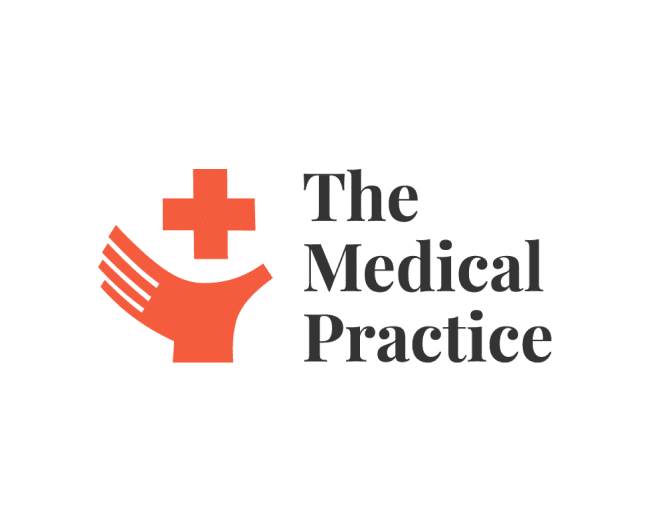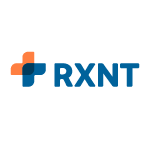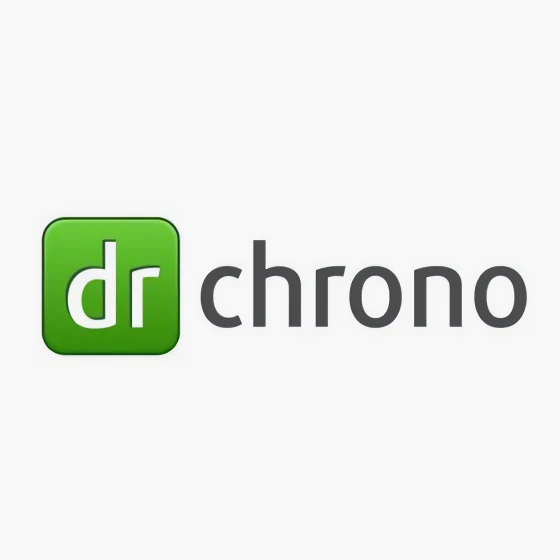10 Best Patient Scheduling Software Shortlist
Here's my pick of the 10 best software from the 21 tools reviewed.
Our one-on-one guidance will help you find the perfect fit.
Managing a medical practice requires juggling patient care with administrative tasks - finding a balance is tricky. Overbooked schedules, missed appointments, last-minute cancellations and a simple mix-up of patient timings is always a struggle. Patient scheduling software can assist by automating and streamlining the scheduling of appointments, freeing up your time to focus more on patient care. It’s incredible for operational efficiency and automating appointment workflows while reducing human errors in your practice. I've been there, faced the chaos, and found a way through it. So let's explore my carefully vetted options for patient scheduling software; your practice will thank you for it!
Why Trust Our Software Reviews
We’ve been testing and reviewing medical practice software since 2023. As medical practice technology researchers ourselves, we know how critical and difficult it is to make the right decision when selecting software. We invest in deep research to help our audience make better software purchasing decisions.
We’ve tested more than 2,000 tools for different medical practice use cases and written over 1,000 comprehensive software reviews. Learn how we stay transparent & check out our software review methodology.
Best Patient Scheduling Software Summary
| Tool | Best For | Trial Info | Price | ||
|---|---|---|---|---|---|
| 1 | Best for practices seeking robust e-prescribing features | Free demo available | From $110/month/provider | Website | |
| 2 | Best for practices offering wellness services | Free trial available | From $35/month | Website | |
| 3 | Best for EHR integration and customizability | Free demo available | From $199/user/month (billed annually) | Website | |
| 4 | Best for integrating HR and benefits with patient management | Free trial + free plan available | From $8/user/month | Website | |
| 5 | Best for its impressive automation and patient communication tools | Not available | Pricing upon request | Website | |
| 6 | Best for integrated care management with intuitive features | Not available | Pricing upon request | Website | |
| 7 | Best for secure online intake forms and practice management | Not available | From $49.90/user/month. | Website | |
| 8 | Best for managing multi-location schedules | Not available | From $200/user/month. | Website | |
| 9 | Best for patient intake and pre-visit planning | Not available | Pricing upon request | Website | |
| 10 | Best for advanced self-service patient portals | Not available | Website |
Best Patient Scheduling Software Reviews
RXNT is a healthcare software provider offering an integrated suite of products, including electronic health records (EHR), practice management (PM), and a particularly robust e-prescribing system. With a primary focus on delivering efficient e-prescribing capabilities, RXNT stands out as a fitting choice for practices that value this feature.
Why I Picked RXNT: I chose RXNT for this list due to its high-level focus on e-prescribing, a feature that I found to be of great value in today's digital healthcare space. The tool stands out for its comprehensive e-prescribing functionality, enabling providers to send prescriptions directly to pharmacies, reducing wait times, and enhancing patient convenience. This dedication to optimizing e-prescribing processes is why I've determined RXNT as the 'Best for' practices seeking robust e-prescribing features.
Standout features & integrations:
One of RXNT's key features is its extensive e-prescribing capabilities, which provide secure, immediate transmission of prescriptions to any retail or mail-order pharmacy. Additionally, RXNT's system offers medication history tracking and drug-drug and drug-allergy interaction checks. RXNT also integrates smoothly with other systems, including EHR and PM, for a more streamlined workflow.
Pros and cons
Pros:
- Smooth integration with EHR and PM systems
- Direct transmission of prescriptions to pharmacies
- Comprehensive e-prescribing features
Cons:
- Occasional lag reported during peak usage times
- Some users reported difficulties in customizing certain features
- The user interface could be more intuitive
Vagaro is a cloud-based platform designed for wellness practices. It not only handles appointment scheduling, but also offers a suite of marketing and POS solutions, making it an excellent choice for businesses focused on health and wellness services.
Why I Picked Vagaro: I picked Vagaro for its holistic approach towards the needs of wellness practices. What sets it apart is its specialized marketing and POS features that perfectly complement its scheduling capabilities, providing a comprehensive solution for wellness businesses. Hence, I concluded that Vagaro is best for practices offering wellness services, where it addresses the unique challenges and needs of such businesses.
Standout features & integrations:
Vagaro's main features include not only an intuitive appointment scheduling system but also marketing tools, such as email marketing and promotion management, and a built-in point-of-sale system. This platform integrates with popular payment processors and social media platforms, enabling online booking through these channels, which aids in boosting practice visibility and convenience.
Pros and cons
Pros:
- Tiered pricing model suited to growing practices
- Integration with social media platforms for increased visibility
- Specialized marketing and POS tools
Cons:
- Limited EHR capabilities
- Learning curve for using the entire suite effectively
- May include more features than required for some practices
DrChrono is a comprehensive healthcare platform that offers an EHR system, practice management, and revenue cycle management services. Its forte lies in the level of EHR integration it provides, and the customizability that allows practices to tailor the system according to their unique needs.
Why I Picked DrChrono: The reason I selected DrChrono for this list is its strong emphasis on integrating Electronic Health Records (EHR) with all aspects of a medical practice. This platform stands out for the customizability it offers, allowing practices to adjust its functionalities according to their specific requirements. I determined that DrChrono is 'best for' EHR integration and customizability because of its flexible and comprehensive approach to managing healthcare records and practice operations.
Standout features & integrations:
Among its many features, DrChrono provides EHR management, appointment scheduling, billing, and a patient portal. These features are designed to improve clinical efficiency and patient care. The system integrates well with numerous third-party apps and services, which extends the functionality of DrChrono and enables practices to have a fully connected operation.
Pros and cons
Pros:
- Robust third-party integrations
- High level of customizability
- Excellent EHR integration
Cons:
- Some users have reported customer service issues
- Might require a steep learning curve for non-tech savvy users
- High starting price may be prohibitive for small practices
Rise People is a comprehensive platform that offers a blend of patient management along with Human Resources (HR) and benefits administration. This tool ensures smooth interplay between patient handling, employee management, and benefits administration, making it particularly suitable for practices that need to seamlessly integrate these functionalities.
Why I Picked Rise People: Choosing Rise People was a natural choice, given its unique combination of patient management with HR and benefits. This dual capability sets it apart from many other tools on the market. Thus, in my judgment, Rise People is best for practices that require the integration of HR and benefits with patient management.
Standout features & integrations:
Rise People's unique feature is its ability to seamlessly integrate HR and benefits administration with patient management. It comes with a comprehensive benefits management system and a sophisticated HR module, all working alongside its patient management module. The tool also integrates with various payroll systems, accounting tools, and time tracking software, further enhancing its utility.
Pros and cons
Pros:
- Offers a user-friendly interface
- Integrates with payroll, accounting, and time-tracking tools
- Provides a seamless combination of HR, benefits, and patient management
Cons:
- The setup process may be complex and time-consuming for some practices
- Limited HR functionalities in the basic 'Essentials' plan
- Pricing could be more competitive compared to similar tools
NexHealth is a patient experience management platform offering a suite of tools for effective patient communication and process automation. The software's robust automation capabilities and comprehensive communication features contribute to its suitability for healthcare practices aiming to enhance patient engagement and streamline administrative tasks.
Why I Picked NexHealth: In making my selection, I chose NexHealth due to its exceptional automation and patient communication tools. This platform stands out with its blend of automated workflows and wide-ranging communication options, which differentiate it from others. I, therefore, believe that NexHealth is best for practices looking for robust automation and communication solutions.
Standout features & integrations:
NexHealth offers a broad range of features such as automated appointment scheduling, reminders, and follow-ups, as well as comprehensive patient communication tools including email, text, and voice messaging. In terms of integrations, NexHealth plays well with various Electronic Health Record (EHR) systems and billing platforms, making it an adaptable choice for different healthcare practices.
Pros and cons
Pros:
- Integrates with many EHR systems and billing platforms
- Comprehensive patient communication tools including email, text, and voice messaging
- Robust automation capabilities for appointment scheduling and reminders
Cons:
- Requires a learning curve to utilize all features efficiently
- Customer support is basic at the lower-priced tier
- Higher level features are available only in more expensive plans
athenaOne offers a patient scheduling solution designed to simplify the complex world of healthcare. The system unifies electronic health records, revenue cycle management, self-scheduling, patient engagement, and care coordination into one accessible platform.
Why I Picked athenaOne: In the process of selecting a top-tier appointment scheduling software, athenaOne stood out due to its intuitive features and integrated approach to care management. I found that it goes beyond basic scheduling and ventures into a unified health record system that encompasses a broader care management landscape. It's the best for integrated care management primarily because it doesn't isolate patient scheduling from other elements of a healthcare practice, which I believe is vital in our interconnected medical world today.
Standout features & integrations:
athenaOne's standout features include real-time patient check-ins, automated appointment reminders, and intelligent scheduling that reduces no-shows. Its integrated suite connects scheduling to electronic health records, revenue management, and patient communication seamlessly. The system also offers direct integrations with major EHR systems, third-party billing, and insurance verification platforms.
Pros and cons
Pros:
- Robust EHR integration
- Intelligent scheduling reduces missed appointments
- Comprehensive, integrated patient management solution
Cons:
- Billed annually, which might not fit all budget structures
- Requires a learning curve due to its extensive features
- Might be pricy for small practices
IntakeQ is a practice management platform that specializes in creating secure, customizable patient intake forms. This software tool allows healthcare practices to streamline the patient admission process, thus making it a preferred choice for practices seeking secure and efficient online intake form solutions.
Why I Picked IntakeQ: I selected IntakeQ for this list based on its ability to deliver secure online intake forms effectively. Its standout feature of providing customizable forms that integrate seamlessly into a practice's workflow aligns well with its purpose. Thus, I have determined IntakeQ as the best for practices that are seeking an efficient method for managing patient intake through secure online forms.
Standout features & integrations:
IntakeQ's standout feature is its customizable and HIPAA compliant online intake forms that can be sent to patients before their appointment. In addition, the tool has a built-in online booking system and a practice management module that enhances its functionality. Integrations include popular EHRs and billing systems, which are crucial for maintaining a comprehensive record and smooth operations.
Pricing:
The pricing for IntakeQ starts from $49.90/user/month. This price is for their Solo plan, which caters to individual practitioners.
Pros and cons
Pros:
- Integrates with EHRs and billing systems
- Customizable forms that suit the needs of different practices
- HIPAA-compliant online intake forms
Cons:
- Limited integrations with other software compared to some competitors
- Users may need some time to familiarize themselves with form customization
- More advanced features require higher-tiered plans
Elation Health is an Electronic Health Record (EHR) software tailored for small to medium-sized primary care practices, focusing on a clinical-first approach to improve patient care.
Why I Picked Elation Health: One standout feature is its enhanced scheduling capabilities, which allow you to manage provider availability across multiple locations and time zones. This flexibility ensures that your practice can accommodate diverse patient needs without compromising efficiency. By clearly displaying clinician availability, both your staff and patients can easily find and book suitable appointment times.
Standout features & integrations:
Other features include clinical reminders that help you stay on top of patient care tasks, ensuring timely follow-ups and adherence to treatment plans. Additionally, secure patient messaging facilitates direct communication between you and your patients. Elation Health integrates with various third-party systems.
Pros and cons
Pros:
- Effectively manages billing and documentation
- Efficient patient engagement tools
- Real-time updates to patient records enhance accuracy.
Cons:
- Data migration can be complex
- Not ideal for larger medical practices
Phreesia offers a comprehensive patient intake solution that helps healthcare providers streamline patient registration, billing, and clinical workflows. Its strength lies in facilitating pre-visit planning, which sets it apart as a tool that enhances patient engagement and staff efficiency.
Why I Picked Phreesia: I chose Phreesia for this list for its robust patient intake features and its unique approach to pre-visit planning. This software stood out in how it streamlines the entire patient intake process, ensuring smooth clinic workflows and improved patient experiences. In my judgment, Phreesia is best for patient intake and pre-visit planning due to its functionality and its dedication to patient engagement and efficient clinical operations.
Standout features & integrations:
Phreesia boasts a suite of impressive features, including online registration, pre-visit planning, patient check-in, and patient tracking. These tools greatly reduce administrative burdens and allow clinics to focus more on patient care. Phreesia also integrates seamlessly with leading EHR and PM systems, offering a more connected and comprehensive healthcare experience.
Pros and cons
Pros:
- Effective in enhancing patient engagement
- Seamless integration with leading EHR and PM systems
- Comprehensive pre-visit planning tools
Cons:
- Limited customization options for certain workflows
- Potential over-complexity for smaller practices
- No publically available pricing
Vecna is a healthcare IT company that offers an advanced patient self-service portal. This platform allows patients to handle everything from appointment scheduling to bill payment, giving them greater control over their healthcare experience.
Why I Picked Vecna: I picked Vecna for this list due to its dedication to creating an advanced patient portal that maximizes self-service capabilities. It stands out for its commitment to patient empowerment and convenience, something that is often overlooked in medical practice management. I believe Vecna is the best choice for those seeking advanced self-service patient portals, as it enables patients to handle many aspects of their healthcare independently, potentially enhancing patient satisfaction and freeing up staff resources.
Standout features & integrations:
Vecna's key features include online appointment booking, bill payment, and a patient check-in system. Their solution also allows for telehealth appointments and incorporates a robust patient education portal. Vecna seamlessly integrates with a range of Electronic Health Records (EHR) systems and other healthcare IT infrastructure, ensuring data continuity and a unified patient experience.
Pros and cons
Pros:
- Telehealth capabilities and patient education tools
- Robust integration with EHR systems
- Comprehensive self-service portal
Cons:
- Could require considerable patient onboarding for optimal usage
- May be more complex than some practices require
- No readily available pricing information
Other Patient Scheduling Software Tools
Below is a list of additional Patient Scheduling Software that we shortlisted, but did not make it to the top 10. Definitely worth checking them out.
- WebPT
Good for physical therapists seeking streamlined appointment scheduling
- Tebra
For small practices seeking a comprehensive solution
- PatientPop
Good for practices aiming to enhance online presence and patient experience
- PatientNow
Good for aesthetic medical practices seeking comprehensive management tools
- Mend
Good for its powerful telemedicine and patient scheduling functionalities
- SolutionReach
Good for its multifaceted patient relationship management features
- Centricity Practice Solution
Good for practices requiring robust reporting and analytics features
- PROScheduler
Good for robust scheduling in high-volume testing environments
- Raintree Systems
Good for specialized practices with its customizable templates
- ChartLogic EHR
Good for its intuitive user interface and navigation
- CentralReach
Good for ABA therapists needing practice management and data collection tools
Patient Scheduling Software Selection Criteria
When selecting the best patient scheduling software to include in this list, I considered common buyer needs and pain points like reducing appointment no-shows and improving calendar management. I also used the following framework to keep my evaluation structured and fair:
Core Functionality (25% of total score)
To be considered for inclusion in this list, each solution had to fulfill these common use cases:
- Schedule appointments
- Send appointment reminders
- Manage patient data
- Handle cancellations and rescheduling
- Sync with calendars
Additional Standout Features (25% of total score)
To help further narrow down the competition, I also looked for unique features, such as:
- Telemedicine integration
- Automated waitlist management
- Multi-location support
- Customizable booking forms
- Analytics and reporting tools
Usability (10% of total score)
To get a sense of the usability of each system, I considered the following:
- Intuitive interface
- Minimal learning curve
- Mobile accessibility
- Customizable user settings
- Clear navigation
Onboarding (10% of total score)
To evaluate the onboarding experience for each platform, I considered the following:
- Availability of training videos
- Interactive product tours
- Access to webinars
- Comprehensive documentation
- Responsive support during setup
Customer Support (10% of total score)
To assess each software provider’s customer support services, I considered the following:
- 24/7 support availability
- Multiple contact options
- Fast response times
- Knowledgeable support staff
- Self-service resources
Value For Money (10% of total score)
To evaluate the value for money of each platform, I considered the following:
- Competitive pricing
- Features included in base plan
- Scalability of pricing tiers
- Discounts for annual plans
- Transparent pricing model
Customer Reviews (10% of total score)
To get a sense of overall customer satisfaction, I considered the following when reading customer reviews:
- Overall satisfaction ratings
- Feedback on customer service
- Comments on ease of use
- Users' opinions on feature set
- Reports of any frequent issues
How to Choose Patient Scheduling Software
It’s easy to get bogged down in long feature lists and complex pricing structures. To help you stay focused as you work through your unique software selection process, here’s a checklist of factors to keep in mind:
| Factor | What to Consider |
|---|---|
| Scalability | Will the software grow with your practice? Consider if it can handle more users or locations as you expand. |
| Integrations | Does it connect with your existing tools, like EHR systems or calendar apps? Check compatibility to avoid data silos. |
| Customizability | Can you tailor it to fit your specific workflows? Look for options to adjust settings and user permissions. |
| Ease of use | Is the interface intuitive for your team? A steep learning curve might slow down your practice. |
| Implementation and onboarding | How quickly can you get up and running? Evaluate the support and resources available during setup. |
| Cost | Does the pricing fit your budget? Compare plans and check for hidden fees or long-term contracts. |
| Security safeguards | How does it protect patient data? Ensure it meets industry standards like HIPAA. |
| Compliance requirements | Does it meet legal and regulatory standards in your area? Verify it supports necessary compliance. |
What Is Patient Scheduling Software?
Patient scheduling software is a tool that helps medical practices manage and organize appointments. Healthcare professionals, such as doctors, nurses, and administrative staff, generally use these tools to improve efficiency and patient satisfaction. Appointment booking, reminders, and calendar syncing help with reducing no-shows and optimizing time management. Overall, these tools simplify scheduling tasks, allowing medical teams to focus more on patient care.
Features of Patient Scheduling Software
When selecting patient scheduling software, keep an eye out for the following key features:
- Appointment booking: Allows patients to schedule their own appointments online, reducing administrative workload.
- Automated reminders: Sends emails or texts to remind patients of upcoming appointments, helping to decrease no-shows.
- Calendar syncing: Integrates with popular calendar apps to ensure all appointments are up-to-date across platforms.
- Patient data management: Stores and organizes patient information securely, making it easily accessible for healthcare providers.
- Telemedicine integration: Facilitates virtual consultations, expanding access to care for patients unable to visit in person.
- Customizable booking forms: Lets practices tailor appointment forms to gather specific patient information upfront.
- Multi-location support: Manages scheduling across multiple practice locations, ensuring consistent operations.
- Analytics and reporting: Provides insights into appointment trends and practice performance, aiding in decision-making.
- Waitlist management: Automatically fills canceled slots with patients from the waitlist, maximizing appointment availability.
- HIPAA compliance: Ensures that patient data is protected according to industry regulations, maintaining confidentiality.
Benefits of Patient Scheduling Software
Implementing patient scheduling software provides several benefits for your team and your business. Here are a few you can look forward to:
- Improved efficiency: Automated booking and reminders reduce administrative tasks, freeing up time for your staff.
- Reduced no-shows: Reminder features help ensure patients remember their appointments, decreasing missed visits.
- Enhanced patient satisfaction: Easy online booking and telemedicine options offer convenience, improving patient experience.
- Better data management: Centralized patient information allows for quick access and improved care coordination.
- Increased appointment utilization: Waitlist management fills canceled slots efficiently, maximizing your schedule.
- Scalability: Multi-location support and customizable features grow with your practice, adapting to changing needs.
- Compliance assurance: HIPAA compliance features protect patient data, ensuring your practice meets regulatory standards.
Costs and Pricing of Patient Scheduling Software
Selecting patient scheduling software requires an understanding of the various pricing models and plans available. Costs vary based on features, team size, add-ons, and more. The table below summarizes common plans, their average prices, and typical features included in patient scheduling software solutions:
Plan Comparison Table for Patient Scheduling Software
| Plan Type | Average Price | Common Features |
|---|---|---|
| Free Plan | $0 | Basic appointment scheduling, limited reminders, and basic calendar syncing. |
| Personal Plan | $5-$25/user/month | Appointment scheduling, email reminders, calendar syncing, and basic reporting. |
| Business Plan | $30-$60/user/month | Advanced scheduling, SMS reminders, multi-location support, and customizable forms. |
| Enterprise Plan | $100-$200/user/month | Full integration options, advanced analytics, dedicated support, and compliance features. |
Patient Scheduling Software FAQ’s
What are the benefits of using patient scheduling software?
Patient scheduling software offers several benefits:
- Improved efficiency: By automating appointment scheduling and reminders, administrative tasks are reduced, freeing up staff to focus more on patient care.
- Enhanced patient experience: With features like online booking, automated reminders, and self-check-in, patients can manage their appointments more conveniently.
- Reduced no-shows: Automated reminders help decrease the number of missed appointments, maximizing clinic productivity.
- Access to insightful data: Reporting and analytics features provide valuable insights into scheduling patterns, helping improve clinic operations and profitability.
- Better integration: Many scheduling tools integrate with EHR/EMR systems, ensuring seamless flow of patient information and improving care delivery.
How much does patient scheduling software cost?
The cost of patient scheduling software varies widely based on factors such as features, the number of users, and whether it’s a cloud-based or on-premise solution. Pricing models often include subscription-based models, which charge a monthly or yearly fee, and one-time purchase models. Some software providers may also charge additional fees for setup, training, and support.
What is the typical range of pricing for patient scheduling software?
The typical pricing for patient scheduling software can range from as low as $10 per user per month for basic solutions to over $100 per user per month for more advanced systems with extensive features. Many vendors offer tiered pricing, allowing practices to choose the plan that best fits their needs and budget.
What is the cheapest and most expensive patient scheduling software?
The cost of patient scheduling software can vary greatly. On the lower end, solutions like SimplePractice offer plans starting at around $39 per month. On the higher end, software like athenahealth can cost several hundred dollars per user per month, depending on the features included.
Are there any free patient scheduling software options?
Yes, there are some free patient scheduling software options available, but they usually come with limitations. For example, free versions may limit the number of appointments or offer fewer features. Square Appointments and Setmore are examples of providers offering a free plan, primarily for single users or small practices.
What’s Next:
If you're in the process of researching patient scheduling software, connect with a SoftwareSelect advisor for free recommendations.
You fill out a form and have a quick chat where they get into the specifics of your needs. Then you'll get a shortlist of software to review. They'll even support you through the entire buying process, including price negotiations.
























